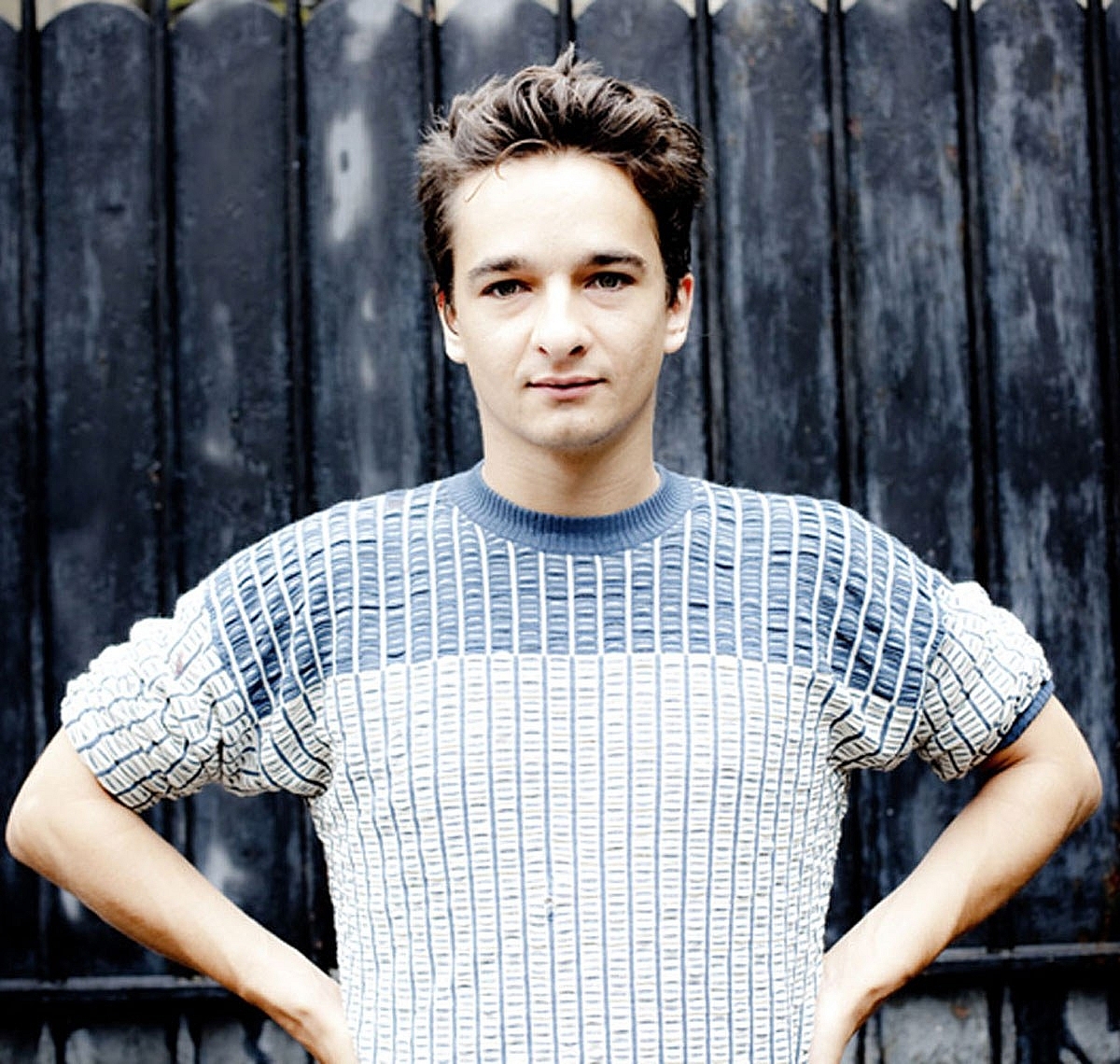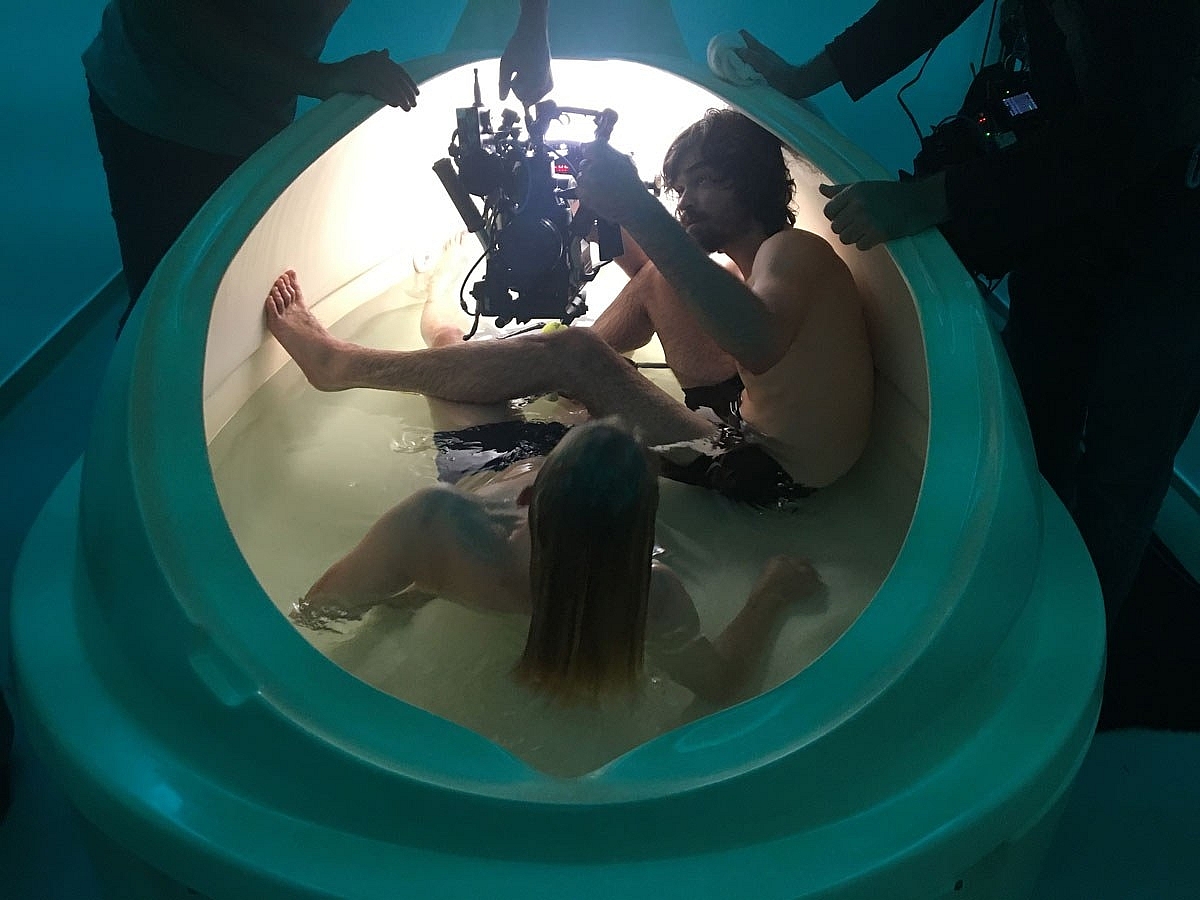'Diamantino' harnesses Kodak S16mm for an engaging visual mash-up

A still from the S16mm feature film "Diamantino", screening at the 2018 Cannes Film Festival.
Shot on Kodak 16mm, and screening in the Semaine de la Critique section of the 2018 Cannes Film Festival, Diamantino mixes money laundering, soccer star cloning, fascist machinations, evil twins and giant puppies to reflect on the contemporary world.
“It’s a mash-up of sci-fi, horror, noir and romantic-comedy, all combining to create a dark fairy tale for adults,” say co-directors Gabriel Abrantes and Daniel Schmidt. “But it’s not set in a make-believe, once-upon-a-time Neverland. It is set amid the conflicts of today. It’s the story of star-crossed lovers, in the middle of the refugee crisis, the Panama Papers, and the rise of the extreme right. But like any good fairy tale, I hope this film entertains, while also offering some new perspective on what’s happening in the world.”
The film stars Carloto Cotta as Diamantino, a world-famous soccer star who loses his special touch and ends his career in disgrace. Searching for new purpose, the international icon sets out on a delirious odyssey where he confronts neo-fascism, the refugee crisis, genetic modification and the hunt for the source of genius.
“Daniel and I always wanted to work with Carloto,” says Abrantes. “He delivers such generous, inventive performances that are endearing yet hilarious. As soon as we thought of him we pictured him as a naïve but hyper-wealthy soccer genius. The pieces came together at once – actor, character, story – which was great. We wrote the film with Carloto in mind, but on set he really brought an emotional life to the film by inventing such a surprisingly touching hero.”


Gabriel Abrantes and Daniel Schmidt, co-directors of the S16mm feature film "Diamantino"
The production was always destined to shoot on film as Abrantes says quite categorically, “Because I love it. I’ve made 20 shorts, and now this feature, and almost every single one was on film, on Kodak S16mm. There is something religious about film. On set, it instills an aura of reverence, that isn’t quite the same with digital.”
Diamantino was produced by Justin Taurand, Maria João Mayer and Daniel van Hoogstraten, with cinematography overseen by Charles Ackley Anderson. Filming took place for five weeks in Portugal – at locations in Lisbon, including the 17th century Palace of The High Courier of Loures, in the Algarve and at Smiling Studios (Lisbon). “The landscapes and light in Portugal are beautiful. It’s where I’m from, so I’m partial,” says Abrantes. “But it was amazing to shoot in the Algarve, off the coast, and in the 17th century Palace of Loures.
“We took advantage of natural light when we could. But we also did some big set-ups – like lighting the interior of the Loures Palace at night, to give the effect of moonlight coming through the windows, with some half dozen 20kw HMIs propped up on scaffolding outside. Lighting the soccer field at night was an ambitious set-up.”
Abrantes says the inspiration for the look of the film came from a variety of sources. “We wanted a simple, iconic, charismatic main character – like Balthazarin Au Hasard Balthazar [1966, dir. Robert Bresson, DP Ghislain Cloquet].We wanted the most improbable romantic duo, funny and charming, like Hepburn and Grant in Bringing Up Baby [1938, dir. Howard Hawks, DP Russell Metty]. We wanted a schizophrenic political narrative that mirrored the insanity of our political reality, á la South Park, To Be or Not to Be [dir Ernst Lubitsch, DP Rudolph Maté] and Underground [1995, dir. Emir Kusturika, DP Vilko Filac]. We also wanted a simple fairy tale narrative, like Cinderella. Popular genre films really inspired us too, screwball comedies like Trouble In Paradise (1932, dir Ernst Lubitsch, DP Victor Milner) and Sullivan’s Travels (1941, dir. Preston Sturges, DP John F. Seitz). Underground filmmakers were a big influence as well, like Kenneth Anger or Andy Warhol. Their twisted and perverted appropriations of pop culture have always thrilled us.”
The production was shot in 2.39:1 aspect ratio, using an ARRI SR3 S16mm camera, fitted with a range of mostly Zeiss Super Speed lenses, ranging from 6mm to 1200mm in focal length. The camera package was supplied by Planar in Lisbon.
“Daniel and I like to mix different visual ideas, like going to the extremes of focal lengths – from the extreme wide-angle of a 6mm to get a distorted, flattened out panorama of a whole set, to the super telephoto of a 1200mm lens that gives us effects like an enormous sun setting behind our silhouetted characters.

A behind the scenes shot from "Diamantino." Photo credit: co-directors Gabriel Abrantes and Daniel Schmidt.
“We used a handheld camera, with gritty Kodak 16mm 500T, that is reminiscent of indie and underground films – then contrasted that with the cinemascope 2.39 widescreen aspect ratio, that is more often found in big glossy productions. The contrast of different looks, like the indie 16mm and glossy cinemascope format, is what for us makes an original look, that seems surprising.”
The production harnessed 16mm KODAK VISION3 500T Color Negative Film 7219 16mm Vision 3 500T, developed at Silverway labs in Paris. “We had to work fast and be flexible, so we stayed to one stock that would work in all conditions – and 500T was great for this,” he says. “I’ve shot on a variety of Kodak film stocks – 50D, 250D, 500T, Vision 2, Vision 3, Super 8, Kodachrome and Ektachrome. All of them are beautiful, rich and warm, and the latitude they give you in the coloring room is just astounding. Film is like an HDR digital photo all packed into a few grainy layers of emulsion.”
Depending on the scene, the filmstock was variously push and pull-processed at Silverway lab, after under or overexposing on set to bring smoothness to the grain, while still getting some in the dark and shadow areas of the image.
When asked for an example of a scene in Diamantino that shows film to its best advantage, Abrantes says, “I think it’s our Das Rheingold ‘love montage.’ There’s just a potpourri of different beauty shots strung along, at all different times of day and night, and they all flow so beautifully together. It’s love rendered through all the wonderful variegation that film offers.”